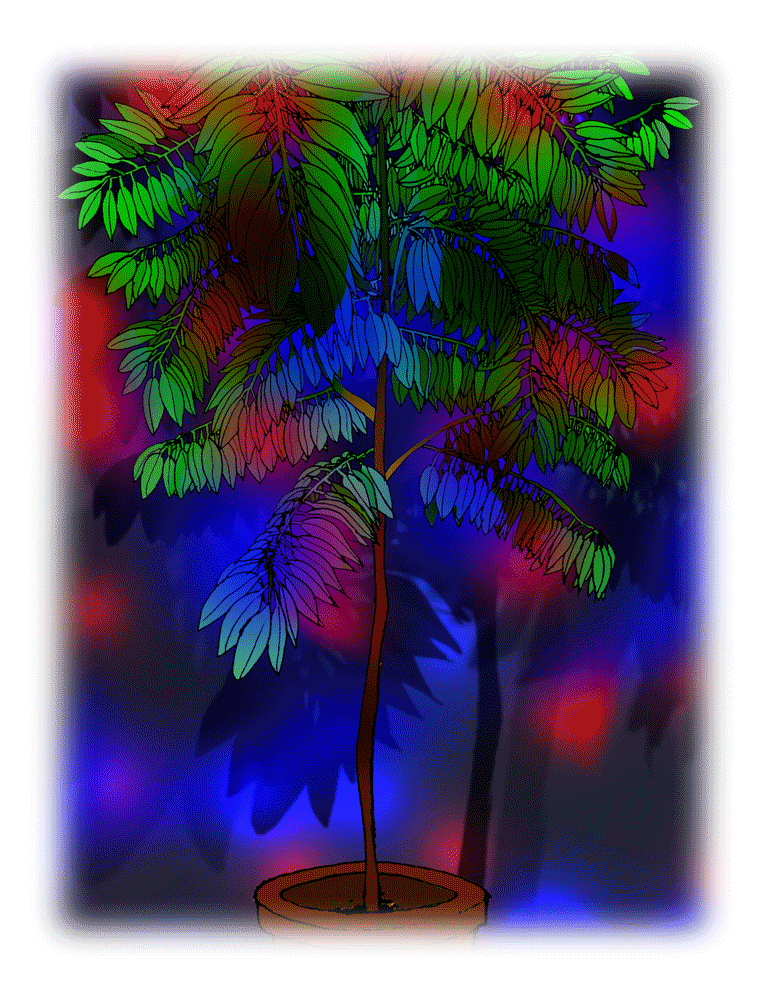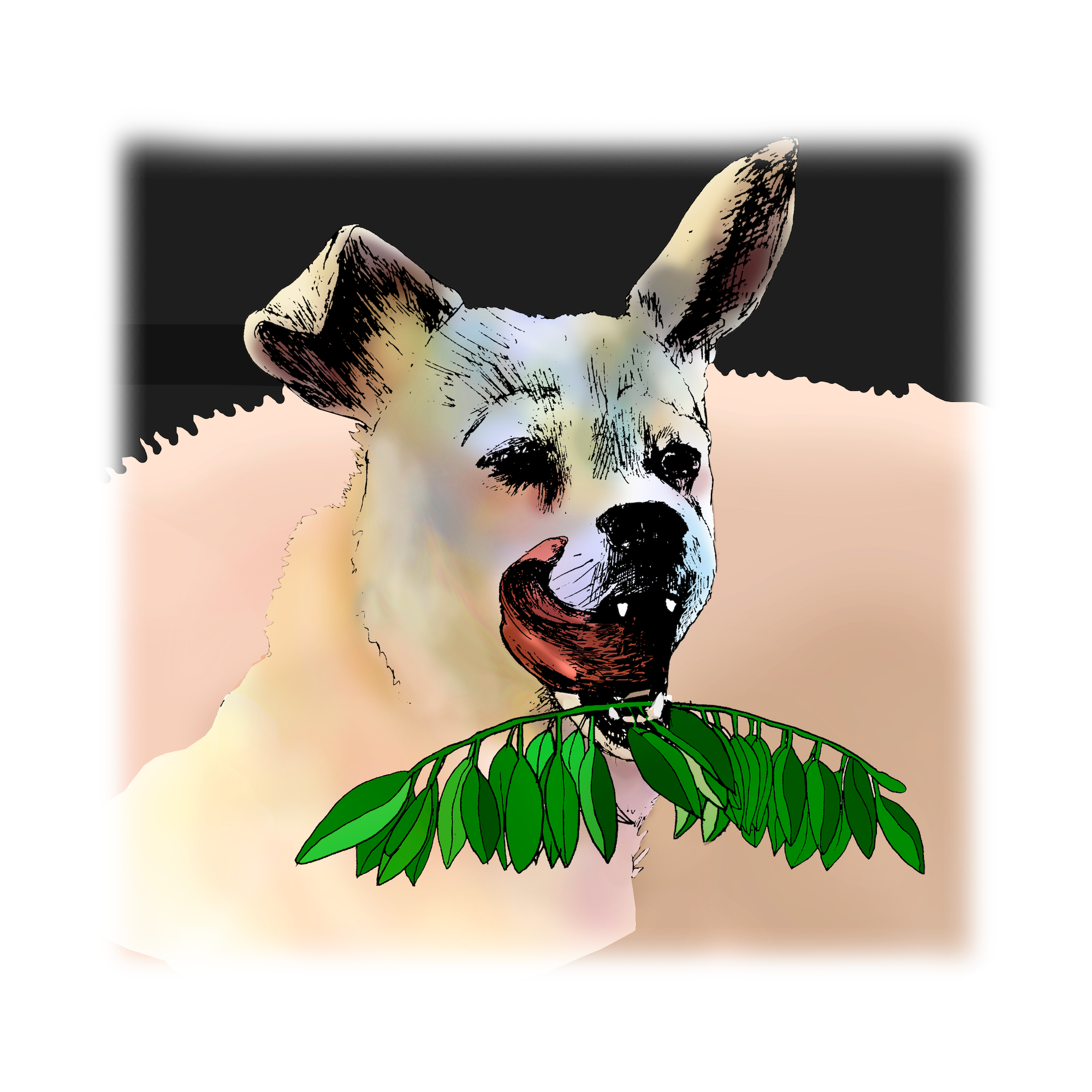
At the California border, life—and the memory of homemade Xinjiang cumin lamb—flashes before your eyes.
I had one month to pack up my life in Brooklyn and move to Los Angeles. The plan was to sell my car and find a new home for my curry tree, which had started off as a sad and unpromising sapling from a Connecticut nursery, but after five years sported an inch-thick trunk and towered just over six feet. My girlfriend’s employer was paying for the move, and the tree was the first object the surveyor gravitated toward when he arrived. “You’re not thinking of taking this, I hope,” he said, peering through bifocals at its tiny white flowers and holding his clipboard close to his chest. Movers, he explained, don’t handle plants.
Three weeks before the move, however, my mechanic said I had plenty of meat left on the brakes of my old gray Mazda and maybe 50,000 miles on the engine, so I decided to drive the curry tree to the West Coast. After taking careful measurements, I determined that the trimmed tree could be wedged to fit on the floor behind the passenger seat. My only concern was what six days in a hot car might do to it.
“My great grandmother brought a curry tree from India to East Africa on a ship,” my girlfriend said, half-joking but also not at all. “This is something we’ve done for centuries. It’s no big deal.”
No one in my family had ever done anything like that. Growing up on Long Island, we let our asparagus grow too stalky to steam. Our raspberry bushes were impractically thorny to enjoy. We left a lot on the vines.
Leaves from the curry tree, a plant known as Murraya koenigii, are foundational to dozens of Southeast Asian and African foodways. They are integral to soothing Gujarati kadhi, chile-sauced Malay fried chicken, and obscure dishes like Udupi orange peel gojju, a sweet and sour gravy scooped up with hot chapatis. Slick and a deep shade of green, with tiny serrated edges, curry leaves tend to fume in their raw state. During the peak blaze of summer, just a few droplets from a watering can is enough to kick the leaves’ unmistakable fragrance up into the air.
When curry leaves are crisped in ghee, that same fragrance vaporizes out of the pan, but in the form of a more intense aromatic microclimate of toasted menthols, but also herbaceous, like basil, with a cinnamon-like whiff. In terms of the leaves’ flavor, people report notes of diesel, nicotine, latex paint, or cut grass. As tough as they are to describe, once smelled or tasted in a dish, curry leaves prompt a flutter of instant familiarity, like recognizing a veteran character actor pop up in a film’s third act—before you know why they’re there for the plot.
In Brooklyn, I cooked them down when making saaru, a thin lentil soup fortified with tamarind and dried chiles. I dispatched them into Xinjiang-style cumin lamb stir-fries and cubes of dhokla. When the tree went into overdrive, growing dozens of new branches, I made dry chutney to go with idlis, the fluffy, cakelike rounds of steamed batter gone tangy with ground and fermented rice and lentils. Most people use curry leaves to impart seasoning but don’t actually eat them. I did. I loved them fried and shimmery atop tomato focaccia.
My drafty loft had a single window, and the tree endured regular brushes with death. It dropped its leaves and fruited at random times. One winter, for three months, I kept it on life support under a psychedelic red and blue LED on my desk.
With no real guidance other than Hindi YouTube videos and folk remedies (“Feed it the whey that collects on the surface of yogurt like a puddle,” my girlfriend’s grandmother advised on Facetime), I was always able to coax it back to health. When the trademark green returned to its ribs and petioles, it was like the plant was trying to prove it had an unmatched will to make it to 15 or more feet. And I believed it.
Two weeks before the move, though, a friend texted a warning: The California Department of Food and Agriculture has complex rules and strict inspection procedures for plants at its borders. The policy, designed to protect the environment and agriculture from invasive species, isn’t unusual—the USDA’s Animal and Plant Health Inspection Service once even created a character named Vin Vasive to stop the flow of tree-killing beetles that hitch rides in firewood—and every state (such as Florida and Arizona) has its own border policies.
What sets California apart are its checkpoints, set up along interstates, including in Needles, a town known for its stretch of ghost motels, more recent weed startups, and for being longtime home of Snoopy’s brother Spike, who sleeps inside a saguaro in the surrounding desert.
We planned to drive through Needles. My girlfriend said we should just wrap the tree in garbage bags and hide it in the trunk, but I studied the CDFA’s house plant fact sheet to prepare.
I trimmed three feet of the tree’s overall height and bound its branches with jute. I washed its roots and repacked them in sterile soil, per requirements. “Houseplants must be free of surface pests and appear healthy with no visible signs of disease,” the sheet stated. I repotted the tree in a transparent, polycarbonate food service container, so it would be easier to inspect, and I pored through dozens of warnings about pests like the woolly whitefly, the emerald ash borer, and the Western grapeleaf skeletonizer. I didn’t find any of my tree, but I misted the tree with an insecticidal neem oil solution twice a day. Just in case.
On the road, the curry tree fumed behind us as we ate chalky white gravy biscuits from a motel buffet in Pittsburgh and Crunchwrap Supremes in Amarillo. My dog took issue with the sweaty hothouse environment and the occasional branch that slipped its jute lasso.
At rest stops and gas stations in New Mexico and Arizona, it was clear when people noticed the tree. I started to feel anxious, an apocalyptic twinge, as if I were escorting it into some kind of witness protection program for plants.
The Needles inspection station is just a plaza on a wide highway. Sometimes, the Internet forums I reviewed said, all traffic will be waved through for hours, no plant checks. The morning we arrived, men wearing yellow vests and reflective sunglasses signaled for us to pull over.
Inspector No. 1—as identified by the slip of paper he handed me later—asked where we were coming from. He asked me to pull the plant out of the car. I lowered the clear box into a wheeled cart and asked what he was looking for.
“Could be worm eggs, or the Asian longhorned beetle,” said Inspector No. 1, as he pulled at the trunk. “Could be something we can’t see.”
I rattled off my planned talking points: the sterile soil, the neem spray. I pointed out that my old apartment was outside the quarantine zone for the Asian longhorned beetle. I offered to produce my driver’s license and a map. But everything I said was followed by a pang of instant regret. It felt like trying to use a pencil eraser that’s worn down to the metal.
It didn’t matter. A second inspector wheeled the plant away. Soil shook out from around its now-exposed roots. They waved us through the checkpoint.
“What’s going to happen to it?” my girlfriend said.
“They’re going to take it somewhere and burn it,” I said, stunned.
“You should have wrapped it in garbage bags and hidden it in the trunk,” my girlfriend said.
We didn’t say much else for two hours.
During the rushed extraction, a small branch of the curry tree had snapped off inside the car and was just sitting in the back seat, next to the dog. I dipped it into a water bottle and clutched it in my lap like a sad bouquet. With the right supplies, I thought, I could grow cuttings from the branch we still had. We could still start out in California with a dozen clones of the old tree. Plus, the branch had a cluster of pea-size fruits that were ripe, the color of black currants, so I had seeds. In a year, I could give extra plants to friends and family, who could take cuttings of their own.
In Barstow, we bought coco coir, perlite, and rooting hormone—a gel that accelerates new growth at the site of cuttings—at someplace called Main St. Hydroponic & Gardening. The cashier wasn’t shocked to hear about our experience. He once drove a pickup truck filled with all kinds of plants back and forth across the border. No one ever stopped him. That was the ’80s. “Never bring a houseplant into California,” he said.
In Los Angeles, none of the 12 cuttings I made took root. Three seeds sprouted, but then hardened and abruptly stopped growing after a few weeks.
In December I called the Plant Health and Prevention Services hotline. I told a man named Lewis that I just wanted to know what happened to the curry tree, and all the plants they quarantine.
“First we do a check,” said Lewis. “We look for pests like nematodes, beetles, and worms. After that, we put the plants in a heavy-duty trash bags and they go to local landfill. In a proper way, we destroy them.”
In 2017, according to Lewis, there were 1,746 rejections at the border, including 13,000 pounds of plant material and 200 pounds of cuttings.
Most recently, I learned that curry trees are a favorite target of the Asian citrus psyllid, which can carry Huanglongbing, otherwise known as greening disease. In infected citrus, color leeches from green leaves, fruit is misshapen, and trees die. The disease emerged a century ago, but in the U.S. the rates of Huanglongbing have risen since it was identified in Florida in 1998, in the shoots of an orange jasmine. Huanglongbing was found in Los Angeles in 2012, in a pomelo-lemon hybrid in Hacienda Heights grafted from budwood a gardener received from a member of his church. State agencies have since drawn and redrawn dozens of quarantine zones in Southern California. Huanglongbing could destroy billions of dollars of crops and cost the industry thousands of jobs.
While it’s long been known that curry trees harbor the aphid that spreads Huanglongbing-associated bacteria, researchers have recently learned the trees are immune to it. As a result, curry trees have been enlisted to become “trap plants,” which are grown to distract bugs like aphids away from other, more commercially viable crops. In December, the CDFA released an action plan that lists the production of curry plants as a strategy in the fight against Huanglongbing. We may need more of them.
Everyone asks if I’ve “settled in.” The answer is always yes, and the longer answer is yes, but some things are still unsettling. This might be California’s default state. My plan is to grow a few curry trees from seeds. Maybe they’ll help prevent the end of the world, even if they don’t reach 15 feet. I don’t know. For now, I’ll make soup with the leaves.

